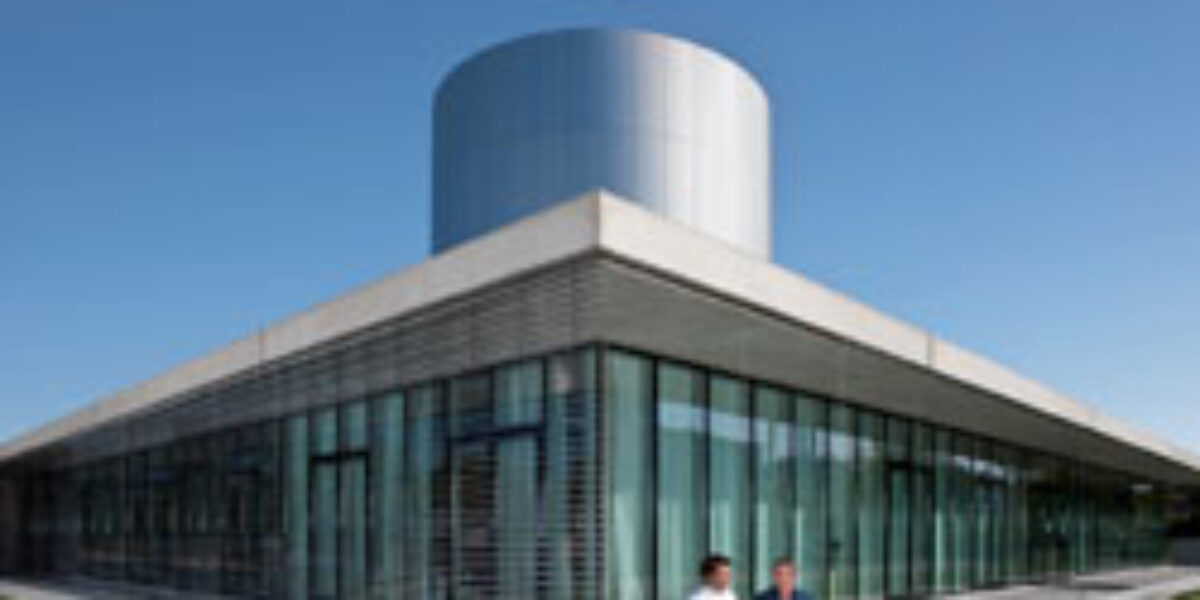Congress city Leipzig – Where Science Meets Economy
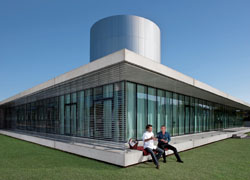 Located at the intersection of the ancient via regia and via imperii trading routes, Leipzig quickly developed into a key market for merchants. The Leipzig Fair is considered the ‘mother of trade fairs’. There has always been an international flair to the city because of its trade and therefore it does not come as a surprise that not only goods, but also ideas were frequently and actively exchanged here among people. The city’s tradition as a centre of academic and research excellence started with the foundation of Leipzig University in 1409, which is today the second oldest university in Germany after Heidelberg.
Located at the intersection of the ancient via regia and via imperii trading routes, Leipzig quickly developed into a key market for merchants. The Leipzig Fair is considered the ‘mother of trade fairs’. There has always been an international flair to the city because of its trade and therefore it does not come as a surprise that not only goods, but also ideas were frequently and actively exchanged here among people. The city’s tradition as a centre of academic and research excellence started with the foundation of Leipzig University in 1409, which is today the second oldest university in Germany after Heidelberg.
Ever since, Leipzig has been home to creative minds of all sorts. Down the centuries, the list of intellectual luminaries who studied at Leipzig University includes Melanchthon, Gottfried Wilhelm Leibniz, Gotthold Ephraim Lessing, Johann Wolfgang von Goethe, Hermann Brockhaus, Friedrich Nietzsche and the physicist and Nobel laureate Werner Heisenberg. Not least, German chancellor Angela Markel was a student of physics in Leipzig in the 1970s. The modern campus of Leipzig University is located in the heart of the city, near Augustusplatz square.
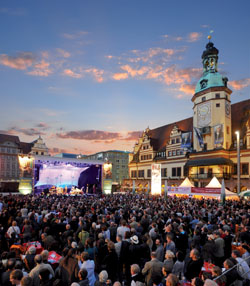 Centre of science with a cluster strategy
Centre of science with a cluster strategy
In addition to Leipzig University and HTWK Leipzig University of Applied Science, some 30 important research institutes have settled in Leipzig, including two Fraunhofer and three Max Planck Institutes. The Helmholtz Centre for Environmental Research in Leipzig boasts unmatched capabilities for researching climate change. Internationally unique is the Leipzig Aerosol Cloud Interaction Simulator (LACIS) at the Leibniz Institute for Tropospheric Research. And the Bio City Leipzig is the birthplace of solutions in the fields of biotechnology, biomedicine and healthcare. The cardiac unit at Leipzig’s university hospital is one of the world’s leading clinics for heart transplants and keyhole heart surgery. Beside medicine and biotechnology, the city’s cluster strategy highlights information and communications technology, energy and environmental engineering as well as automotive industry and logistics.
The density of prominent science and research centres is one major reason why major scientific meetings are often held in Leipzig. Their presence in the city naturally serves as a multiplier and trigger for all kinds of meetings. From 23 until 27June 2012 for instance the most important convention in the field of cell diagnostics took place in Leipzig: The international cytometry elite came together for the CYTO 2012 (www.cytoconference.org). For the very first time in the more than 30 years of the society’s history the conference was held in Germany. Owing to its excellent scientific position in the field of cytometry, Leipzig stood up to its European competitors Amsterdam, Madrid, Prague, Vienna and Glasgow. This year’s conference focused on issues of regenerative medicine and stem cell therapy. Appr. 1,500 scientists from all over the world attended the accompanying meetings and workshops.
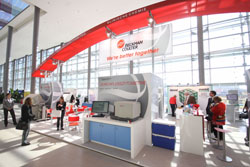 Here’s where the Champions shine
Here’s where the Champions shine
A large-scale event like CYTO is no exception for Leipzig. In 2012 and 2013, the city will see several events and conventions of considerable size, e.g.
- The 51st Annual Meeting of the European Society for Paediatric Endocrinology (ESPE, 20-23 September 2012, www.espe2012.org) with 3,000 participants from 90 countries
- The 64th Annual Meeting of the German Urological Society, which will unite about 7,000 participants (26 to 29 September 2012, www.dgu-kongress.de)
- The 35th Congress of the European Society of Clinical Nutrition and Metabolism (ESPEN, 31 August – 3 September 2013, www.espen.org)
- WorldSkills, the global vocational education event (2-7 July 2013, www.worldskillsleipzig2013.com)
At WorldSkills Leipzig 2013 the best skilled apprentices and young skilled workers from all over the world compete for the vocational World Cup. The WorldSkills competitions are open to competitors up to age 22, and are hosted by a different country every other year. The best international trainees will compete for medals in 45 official disciplines. Over 1,000 competitors, their entourage and up to 200,000 visitors will make WorldSkills Leipzig 2013 the biggest international competition of its kind ever held.
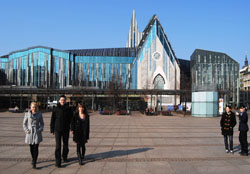 Leipzig Fair and sustainability
Leipzig Fair and sustainability
The modern facilities of Leipziger Messe and Congress Center Leipzig (CCL) provide the perfect backdrop and ideal conditions for all of the above meetings. In the years following the German reunification, on April 12, 1996 Leipzig’s new fairground was inaugurated as the most modern exhibition and convention centre in Europe. This created fresh momentum for Leipzig as a trade fair and congress city.
And the Leipzig Fair is further looking towards the future. Leipziger Messe and the CCL commit themselves to the principles of corporate responsibility. Under the headline Wachsen in Balance (Growing in Balance) Leipziger Messe has launched a transparent and measurable sustainability management system. The objective is to create a new balance between economic growth, and responsibility for the environment and the society. After an extensive sustainability audit process, Leipziger Messe received the Green Globe Certificate, an internationally recognised sustainability certificate of the event and tourism industry, in February 2010 as the first big German fair corporation. For the 50th ICCA Congress, the most important meeting of the meeting industry held in Leipzig in October 2011, efforts were carried even further: the ‘Green Traffic’ project of Leipziger Messe and the local public transport company LVB provided sustainable transportation to and from the convention venues by means of a congress ticket for use on local trams and busses.
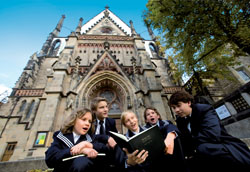 A lively cultural metropolis
A lively cultural metropolis
Leipzig is not only famous because of its trade fair tradition and research landscape but also because of its multifaceted music and cultural scene. Owing to its unique system of passageways, the historic city centre exudes a distinctive flair. Stylish boutiques and top department stores invite visitors to shop and stroll – before, after or sometimes even in-between meetings. Most of the city’s sights are located within walking distance, e. g. the Old Town Hall, St. Thomas Church, St. Nicholas Church, diverse museums and galleries. Cultural enjoyment is among others provided by the Gewandhaus, the Leipzig Opera or the world-famous St. Thomas Boys Choir. The famous choir that was led by Johann Sebastian Bach from 1723 until 1750 is currently celebrating its 800th birthday. It is Leipzig’s oldest cultural institution, dating back to 1212.
Next year the city will not only commemorate the 200th anniversary of the Battle of the Nations, but also pay tribute to the great composer Richard Wagner, who was born here in 1813. To commemorate his heritage there will be a large number of concerts and events, including a Leipzig Wagner Festival with accompanying exhibition, the opening of a new Richard Wagner Museum and – how typical of this meeting city – an International Richard Wagner Congress with more than 1,000 delegates. Not only those Wagnerians, but all congress-goers will find themselves confronted with the eventful history of the Saxon metropolis at practically every turn.


